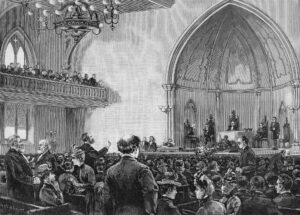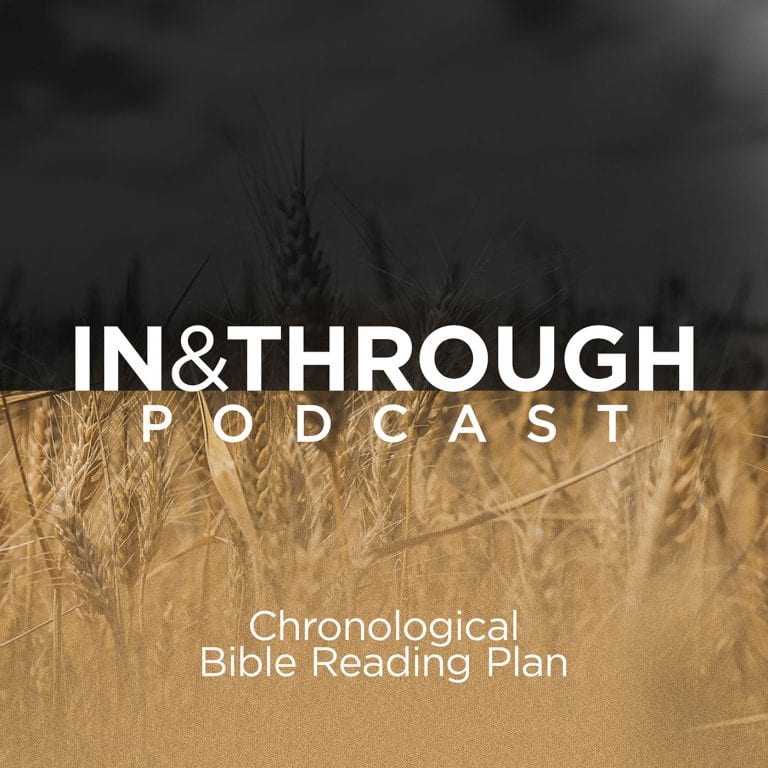Today, the Bible’s origins have been shrouded in several myths, and in the days of Dan Brown and The DaVinci Code it has not been an easy task for most to sift history from them. In this piece, I want to address some of these myths or misconceptions about the history of the Bible in hopes that it will cause readers to probe the issues more for themselves.
Myth #1: A Council Decided the Books of the Bible
For whatever reason the idea persists that the biblical canon was decided by authorities (usually rabbis or bishops) at a sanctioned council. Yet, in no ancient source, Jewish or Christian, is there a recorded vote on the books to be included or excluded from the canon of Scripture. The so-called council of Jamnia that met around 90 AD to discuss the closing of the Writings and therefore the Hebrew Bible has been shown to be a school or an assembly with no authority. Perhaps they discussed the scriptural status of Song of Songs or Ecclesiastes. Furthermore, the Jews continued to discuss various books such as Esther, Proverbs, Sirach, and Ezekiel after the meetings at Jamnia.
For Christians, Dan Brown has made the Council of Nicaea under Emperor Constantine the event that closed the New Testament and therefore the Christian Bible. There is no record of this action at this council. Furthermore, after Nicaea, Christians continued to dispute certain books at the edges (e.g. Revelation), most churches recognizing it, while some others called it “spurious,” but by the end of the fourth century most of these disputes had subsided.
Myth #2: There were Different Hebrew and Greek Old Testament Canons
Although there were different opinions among Christians over the scope of the so-called Septuagint canon—namely over the inclusion of the following books: Tobit, Judith, Wisdom of Solomon, Wisdom of Sirach (aka Ecclesiasticus), 1–2 Maccabees, many talk about “the Septuagint Canon” as though it was a different canon than the Hebrew one. As a matter of fact, most early Christians thought their canon was equal to the twenty-two-book Hebrew canon and would have been surprised to learn of differences. This was true from an early time since our second-century Greek canon lists (e.g. Melito) agree mainly with the fourth-century Greek lists (e.g. Cyril of Jerusalem).
The North African churches were probably the first to include the six deuterocanonical books in the canon of the Old Testament, and Augustine, the Synod of Hippo, and Pope Innocent I promulgated this canon. Indeed, it was this wider Old Testament canon that formed part of the debate between Martin Luther and John Eck at Leipzig in 1519. Eck brought forth the evidence of Augustine for a canon that included the books of Maccabees (2 Macc. 12:43–45 to justify purgatory), while Luther noted that these books were not included in the Hebrew canon and the lists of Jerome or Eusebius. We could interpret the original Christian Old Testament in Greek dress as mirroring the Hebrew canon and Augustine’s and Trent’s wider canon as a variant to this canon.
Myth #3: Books in a Codex are Part of the Canon
The codex is the ancient forerunner to our modern book form. Scribes copied various books and assembled them into codices. It has been said, therefore, that codex and canon go hand in hand to the extent that whatever books were included in a codex were considered part of the canon. Thus, the famous fourth-century Codex Sinaiticus contains all twenty-seven books of the New Testament including two very popular works at the end—the Epistle of Barnabas and the Shepherd of Hermas.
Did these Christians recognize these works as part of their canon? Doubtful. Rather, they probably considered them to be useful and edifying scripture but not canonical scripture; that is, they were useful books for instruction in piety but not for the establishing of ecclesiastical doctrine. Were the so-called Gnostic gospels such as the Gospel of Thomas close to making it into the canon? Again, doubtful. These kinds of works were called “apocryphal” (hidden) by both the proto-orthodox and other groups from the second century onward. The catechumens were prohibited from reading them and only scholars within the church (e.g. Origen; Epiphanius) appear to have made use of them in so far as they may have contained useful information not found in canonical books.
Myth #4: The Bible was Transmitted like a Message in The Telephone Game
Kurt Eichenwald in a Newsweek article (December 2014) entitled, “The Bible: So Misunderstood It’s a Sin,” compared the copying of the text of Scripture with playing the Telephone Game. He puts the matter colorfully but bluntly:
No television preacher has ever read the Bible. Neither has any evangelical politician. Neither has the pope. Neither have I. And neither have you. At best, we’ve all read a bad translation—a translation of translations of translations of hand-copied copies of copies of copies of copies, and on and on, hundreds of times.
Of course, Eichenwald evokes the image of a game that we have all played where a message starts at the beginning of a circle of people and by the time it gets to the end of the circle the message is usually very different from the original one. Eichenwald believes that the process of copying and translating biblical texts has rendered impossible the reading of the Bible.
Copying manuscripts by hand and translating texts caused problems in the transmission of the text as the ancients themselves noted time and time again (cf. the Prologue to Ben Sira; Letter of Aristeas; various church fathers). But the copying and translation process was unlike our telephone game since even the ancients knew they could compare their corrupted copies to other MSS to correct the text.
Although we have no original autographs, we can have confidence in the copying process because later manuscripts usually confirm the readings in earlier ones with some exception. For example, the Hebrew text preserved in the Masada Psalms scroll (ca. 30 BC; fragmentary text of Psalms 81–85) is almost identical in every respect to the later Aleppo Codex (930 AD) for the same Psalms. But there are other Psalters that were discovered at Qumran with additional psalms in different orders than our own. Given also the early evidence of the Old Greek Psalter (ca. 200 BC) which agrees mainly with our own, these psalters found at Qumran may have been compiled later to meet the needs of the liturgy of that community.
Conclusion
Although the history of the Bible is long and complex, and we couldn’t possibly treat the matter in one article; an understanding of its history should lead to more confidence that its canon and text are authentic and not contrived or the result of some conspiracy.
Further Reading
Gallagher, Edmon L. and John D. Meade. The Biblical Canon Lists from Early Christianity: Texts and Analysis. Oxford: Oxford University Press, 2017.
Beckwith, Roger. The Old Testament Canon for the New Testament Church. Grand Rapids: Eerdmans, 1985.
Metzger, Bruce M. The Canon of the New Testament: Its Origin, Development, and Significance. Oxford: Oxford University Press, 1987.



















